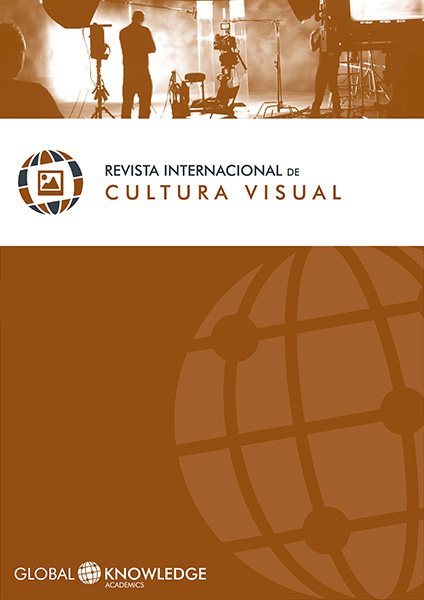Image and Paradigmatic City's Imaginary: a Space-Time Reading at "Midnight in Paris"
DOI:
https://doi.org/10.37467/gka-revvisual.v2.650Keywords:
City, Image, Space-Time, Urban ParadigmAbstract
Paris are a emblematic and paradigmatic city cause it's most showing in images. The landscape, the Urbanism, the architectural forms are used as a model to city around the world, inclusively in Brazil. Talking about urban imaginary, at any context, demand uses this referential space. This is a city who has a very long time of existence and a very big cultural legacy who produce a very rich representation. Woody Allen at "Midnight in Paris" was captured the essence of this imaginary where, to find the real city, we need search them at an old era. The time steps surround the city and suited their landscape, as proven W. Benjamin (1989) the temporal elements more heterogeneous can be found side-by-side. In this way, this article's goal is, such a city's image showing at "Midnight in Paris", analyzing the senses of urban temporalities at her relationship with the paradigmatic imaginary of the French's capital city, overall as irradiating of model and metaphors. The theoretical and methodological support used for this examination is Gaston Bachelard's imagination's phenomenology and the Walter Benjamin elaboration, where an imaginary "flanerie" will be undertaken at this time-city wrought by W. Allen.
Downloads
References
Aguiar, L. A. (2013). A Paris de Hemingway em Paris é uma festa por Ernest Hemingway. Rio de Janeiro: Bertrand Brasil.
Allen, W. (2011). Midnight in Paris. Culver City, Calif: Sony Pictures Home Entertainment.
Bachelard, G. (1985). O direito de sonhar. São Paulo: Difel.
Bachelard, G. (1989). A Chama de uma vela . Rio de Janeiro: Bertrand Brasil.
Bachelard, G. (2000). A poética do espaço. São Paulo: Martins Fontes.
Bachelard, G. (1988). A poética do devaneio. São Paulo: Martins Fontes.
Barry, J. (1980). Somewhere in time: Original motion picture soundtrack . Universal City, CA: MCA Records.
Batista, M. R. (2012). Os artistas brasileiros na Escola de Paris: anos 1920. São Paulo: Editora 34.
Benjamim, W. (1989). Obras escolhidas lll: Charles Baudelaire um lírico no auge do capitalismo. São Paulo: Brasiliense.
Benjamim, W. (1995). Obras escolhidas II: Rua de mão única. São Paulo: Brasiliense.
Benjamim, W. (2009). Passagens . Belo Horizonte: UFMG; São Paulo: Imprensa Oficial.
Dubois, P. (2012). O ato fotográfico . Campinas: Papirus.
Durand, G. (1992). As estruturas antropológicas do imaginário . São Paulo: Martins Fontes.
Franco, M. (2014). Eterna meia-noite em Paris. Revista Bula. Acesso em 05 de julho de 2014. http://www.revistabula.com/2523-eterna-meia-noite-em-paris/
Haddad, J. A. (2011). Interpretações das mil e uma noites. Collatio 6 . Acesso em 09 de setembro de 2011. http://www.hottopos.com/collat6/jamyl.htm
Hemingway, E. (1964). Paris é uma festa. São Paulo: Circulo do Livro.
Hemingway, E. (2013). Paris é uma festa. Rio de Janeiro: Bertrand Brasil.
Jarouche, M. M. (2006). Livro das mil e uma noites . São Paulo: Globo.
Jones, C. (2013). Paris: biografia de uma cidade. Porto Alegre/RS: L&PM.
Manguel, A. (2001). Lendo Imagens: uma história de amor e ódio. São Paulo: Cia das Letras.
Matos, O. (1989). Traduzir Proust em O tempo redescoberto, v .7 por Marcel Proust, 293-295. São Paulo: Globo.
Pesavento, S. J. (1999). O imaginário da cidade: visões literárias do urbano – Paris, Rio de Janeiro, Porto Alegre. Porto Alegre: UFRGS.
Portzamparc, C. (1992). A terceira era da cidade. Revista Óculum 9 , pp. 40-49.
Downloads
Published
How to Cite
Issue
Section
License
Those authors who publish in this journal accept the following terms:
- Authors will keep the moral right of the work and they will transfer the commercial rights.









